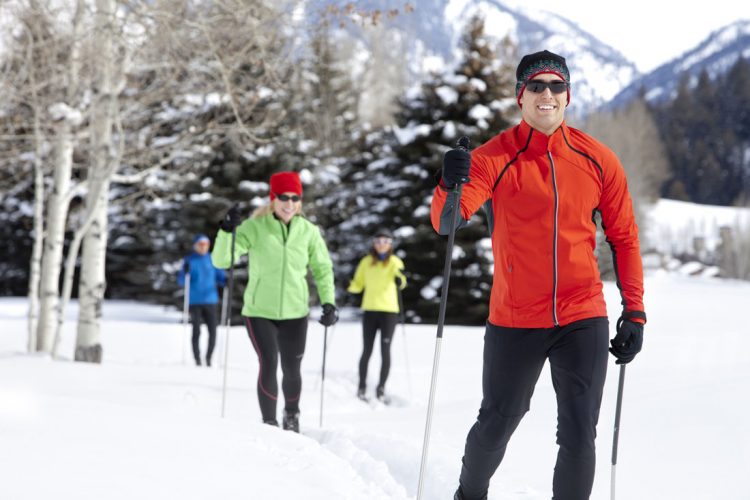By NASM
The terrain has changed; leaves have fallen, the weather is colder and for many, snow is covering the ground indicating that winter is really here. For those who enjoy exercising outdoors, your activities may have become somewhat limited with what you can do; snow covered streets and sidewalks don’t make for the best running or biking conditions. However, cross-country skiing offers a fun and challenging alternative for those who are looking to exercise outside.
Equipment
Cross-country skiing typically utilizes equipment similar to that of downhill skiing. The skis used are narrower to reduce the friction against the snow plus a longer length to displace the skier’s weight more evenly. The ski poles are typically longer and have a sharp end to help penetrate icy surfaces. Equipment will vary slightly based on the technique adopted for cross-country skiing.
Technique
There are two techniques used for cross-country skiing. The first technique is classic in which skiers use a running action to achieve momentum. Classic cross-country skiers are able to emulate the motion of running because of the free heel design of the bindings, allowing skiers to plantar flex (point their foot downward) in order to generate force needed to propel forward (1). Skate skiing uses a more dynamic approach that allows skiers to generate force through a motion similar to ice skating. Like downhill skiing, the heel is fixed onto the ski which allows for a more fluid transfer of force. Cross-country skiing can be done almost anywhere snow covers the ground; however, icier and more compacted snow cover is more preferable.
Training
Training for cross-country skiing can be modified to accommodate the demands of the individual and their goals. Individuals seeking more than just recreational pursuits can enter cross-country races, which usually cover distances from 10-50 km (2). Athletes typically use a zone training system in which exercise intensity is based off the goals and fitness of individuals. Although not completely identical, this type of training is similar to the cardiorespiratory zone training system found in NASM’s Essentials of Personal Fitness Training text (3).
(Try this OPT power training workout for cross-country skiing.)
Benefits
Cross-country skiing delivers an array of aerobic benefits. When compared with other aerobic exercise modalities (i.e., running, stair stepper, elliptical, rowing, rider and cycle ergometer) at various intensities, cross-country skiing ranked as one of the highest, just behind running in caloric expenditure (4). A 200 pound individual can burn 619 calories in a single hour of a cross-country skiing workout, which is perfect for combating those large meals eaten over the winter holidays (5).
Another study investigated the correlation between high intensity cross-country skiing and key components of aerobic performance. It was found that cross-country skiing for a five month period increased activity in enzymes correlated to improved aerobic performance which helped provide evidence to the molecular and systemic changes undergone during this activity (3).
Studies have also shown the benefits of cross-country skiing on anaerobic performance and total body strength as well (6, 7). For those who don’t enjoy lifting weights or just simply don’t have time for both endurance and strength training, this is great news.
Looking for locations to ski the trails? Search on XCSki.org.
Wrapping up
Although it’s not a year round sport, cross-country skiing can add variety and excitement to any exercise routine. Cross-country skiing can be done anywhere, from a park to a golf course, and is an exciting way to get in shape. Some of the best aerobically trained athletes in the world are cross-country skiers, shedding some light on the benefits that cross-country skiing can offer (2). Stay in the outdoor action this winter, try on a pair of cross-country skis and find out for yourself the challenge and diversity that comes with this activity.

